Remembering Dr. Comet
I really wish Fred Whipple was still alive to see the newspapers this week. There, amidst the Middle East horribleness, he would have read about how the space probe Rosetta is nearing the comet 67P/Churyumov-Gerasimenko. As of this morning, the craft had pulled to within 60 miles of 67P's surface. Both are traveling about 35,000 miles per hour - that's 10 miles a second (!) - in a compact duet. And, if all goes to plan, Rosetta will soon jettison a dishwasher-sized box called Philae which will land on the comet and analyze it. ((Named after an island in the Nile where an obelisk was found that was used in conjunction with the Rosetta Stone to decode Egyptian hieroglyphics.))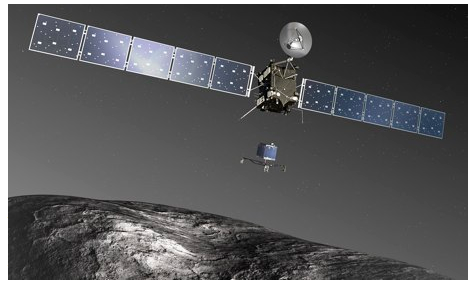 This exciting space mission - landing on a comet! C'mon...that's wild! - makes Whipple's absence all the more notable. Unfortunately, the American astronomer passed away in 2004, just five months after the European Space Agency launched Rosetta. Whipple would have appreciated the Rosetta mission for at least two reasons. It would have spoken to his career as a scientist and also connected with his bold and ambitious plans for large-scale, high-profile scientific programs. Who was Fred Whipple? He was born in 1906 in Red Oaks, Iowa but his family soon joined the migration of Midwesterners to southern California where he attended the University of California, Los Angeles. His choice of a career in astronomy was serendipitous, almost made by default. The lab work of physics didn’t appeal to him and he was too squeamish to pursue a medical career despite his parents’ wishes. Fortunately, Whipple enrolled in an astronomy course his junior year and he relished it.
This exciting space mission - landing on a comet! C'mon...that's wild! - makes Whipple's absence all the more notable. Unfortunately, the American astronomer passed away in 2004, just five months after the European Space Agency launched Rosetta. Whipple would have appreciated the Rosetta mission for at least two reasons. It would have spoken to his career as a scientist and also connected with his bold and ambitious plans for large-scale, high-profile scientific programs. Who was Fred Whipple? He was born in 1906 in Red Oaks, Iowa but his family soon joined the migration of Midwesterners to southern California where he attended the University of California, Los Angeles. His choice of a career in astronomy was serendipitous, almost made by default. The lab work of physics didn’t appeal to him and he was too squeamish to pursue a medical career despite his parents’ wishes. Fortunately, Whipple enrolled in an astronomy course his junior year and he relished it.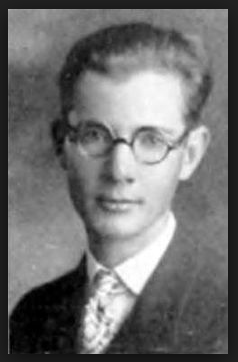 After graduation, armed with a letter of recommendation from his astronomy teacher, he started classes at Berkeley in 1927. There, Whipple came under the tutelage of Armin O. Leuschner. Leuschner’s research specialty was orbit theory and computing the motions of celestial bodies, especially comets and asteroids.Whipple finished his degree in 1931 and had to decide what to do next. The Depression was underway, Whipple was newly married with a young son, and few people saw astronomy as the path to riches and stability. Nonetheless, Harlow Shapley, the well-known director of the Harvard College Observatory, offered Whipple the opportunity to come to the Harvard observatory as a staff member. Whipple accepted and soon started a research program studying meteors and comets.In the late 1940s, the origin and makeup of comets still puzzled astronomers. Most scientists thought comets were basically flying clouds and chunks of particles held together by gravity (i.e. the “gravel-bank” model). Yet this conceptual picture couldn’t account for a good deal of observational evidence or explain their origin. Why did comets seem to be so fragile, with some breaking up after passing by the sun a few times? And why did their movement and speed change over time?
After graduation, armed with a letter of recommendation from his astronomy teacher, he started classes at Berkeley in 1927. There, Whipple came under the tutelage of Armin O. Leuschner. Leuschner’s research specialty was orbit theory and computing the motions of celestial bodies, especially comets and asteroids.Whipple finished his degree in 1931 and had to decide what to do next. The Depression was underway, Whipple was newly married with a young son, and few people saw astronomy as the path to riches and stability. Nonetheless, Harlow Shapley, the well-known director of the Harvard College Observatory, offered Whipple the opportunity to come to the Harvard observatory as a staff member. Whipple accepted and soon started a research program studying meteors and comets.In the late 1940s, the origin and makeup of comets still puzzled astronomers. Most scientists thought comets were basically flying clouds and chunks of particles held together by gravity (i.e. the “gravel-bank” model). Yet this conceptual picture couldn’t account for a good deal of observational evidence or explain their origin. Why did comets seem to be so fragile, with some breaking up after passing by the sun a few times? And why did their movement and speed change over time?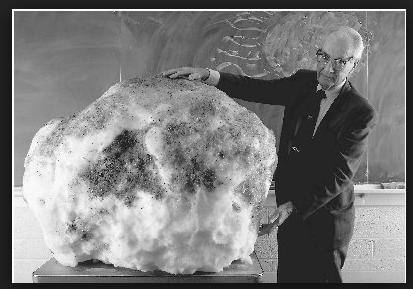 Whipple’s pre-World War Two research on meteor primed him to develop a more accurate model for the structure of comets. Specifically, he tried to account for the jet-like action seen as material vaporized from an incoming meteor. He realized that a new model of a comet’s core could explain such effects. In a series of papers and presentations from 1949 to 1951, Whipple proposed that the cores or nuclei of comets are icy conglomerates or, as the press later called them, dirty snowballs. ((Fred L. Whipple. “A comet model. I. The acceleration of Comet Encke.” The Astrophysical Journal 111, (1950): 375-394.))Whipple’s model accounted for a whole host of behavior including the jet-like structure in the region around the comet’s nucleus which can alter the body’s speed and direction. The idea also explained why comets can produce streams of meteors as they near the earth. Later seen as one of the most important contributions to solar system science in the 20th century, Whipple’s articles outlining his comet model became some of the most widely cited papers in the astronomical literature. ((1950 and 1951 were especially fruitful times for comet research and Whipple’s work meshed well with Jan Oort’s 1950 idea of comet clouds about the sun and Ludwig Biermann’s 1951 interpretation that electrically charged particles from the sun could interact dramatically with a comet’s tail. Whipple’s 1950 article about Comet Encke was named in 1999 as one of the most important papers to appear in The Astrophysical Journal.)) Nicknamed “Dr. Comet,” he parlayed recognition from the science community into more resources for his research programs at Harvard.
Whipple’s pre-World War Two research on meteor primed him to develop a more accurate model for the structure of comets. Specifically, he tried to account for the jet-like action seen as material vaporized from an incoming meteor. He realized that a new model of a comet’s core could explain such effects. In a series of papers and presentations from 1949 to 1951, Whipple proposed that the cores or nuclei of comets are icy conglomerates or, as the press later called them, dirty snowballs. ((Fred L. Whipple. “A comet model. I. The acceleration of Comet Encke.” The Astrophysical Journal 111, (1950): 375-394.))Whipple’s model accounted for a whole host of behavior including the jet-like structure in the region around the comet’s nucleus which can alter the body’s speed and direction. The idea also explained why comets can produce streams of meteors as they near the earth. Later seen as one of the most important contributions to solar system science in the 20th century, Whipple’s articles outlining his comet model became some of the most widely cited papers in the astronomical literature. ((1950 and 1951 were especially fruitful times for comet research and Whipple’s work meshed well with Jan Oort’s 1950 idea of comet clouds about the sun and Ludwig Biermann’s 1951 interpretation that electrically charged particles from the sun could interact dramatically with a comet’s tail. Whipple’s 1950 article about Comet Encke was named in 1999 as one of the most important papers to appear in The Astrophysical Journal.)) Nicknamed “Dr. Comet,” he parlayed recognition from the science community into more resources for his research programs at Harvard.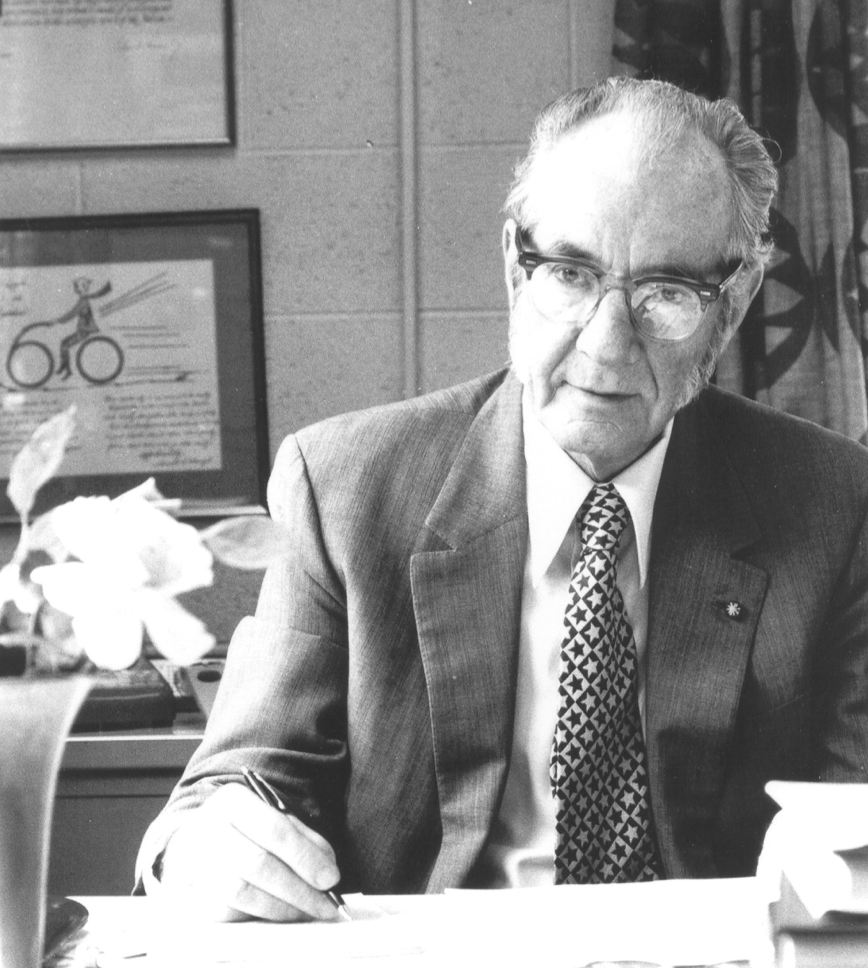 In May 1955, Leonard Carmichael, the secretary of the Smithsonian Institution, presented Whipple as the new director of the then-moribund Smithsonian Astrophysical Observatory. Just as important was Carmichael’s news that the observatory would relocate from Washington, DC to Cambridge where it would be affiliated with Harvard University. This placed him at the epicenter of the Cambridge science community, gave him control of the SAO’s research agenda, and enabled him to get an even firmer foothold in Harvard’s astronomy program.When scientists announced plans for the International Geophysical Year, Whipple saw the opportunity. If the Americans and Soviets were going to launch the world’s first satellites, someone, he reasoned, would have to track and photograph them. While this research might sound mundane today, in 1957 it was basic information essential for any future space exploration by either people or machines. Before orbiting satellites could provide scientists and engineers with this cornucopia of information and applications, they needed know where the satellites were and how they moved.
In May 1955, Leonard Carmichael, the secretary of the Smithsonian Institution, presented Whipple as the new director of the then-moribund Smithsonian Astrophysical Observatory. Just as important was Carmichael’s news that the observatory would relocate from Washington, DC to Cambridge where it would be affiliated with Harvard University. This placed him at the epicenter of the Cambridge science community, gave him control of the SAO’s research agenda, and enabled him to get an even firmer foothold in Harvard’s astronomy program.When scientists announced plans for the International Geophysical Year, Whipple saw the opportunity. If the Americans and Soviets were going to launch the world’s first satellites, someone, he reasoned, would have to track and photograph them. While this research might sound mundane today, in 1957 it was basic information essential for any future space exploration by either people or machines. Before orbiting satellites could provide scientists and engineers with this cornucopia of information and applications, they needed know where the satellites were and how they moved.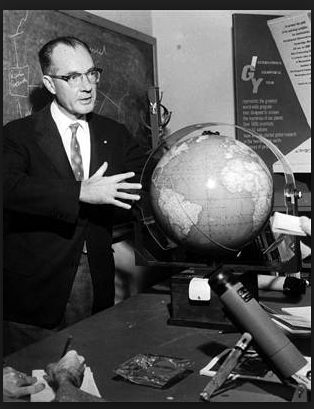 Whipple’s bold plan depended on the cooperation and integration of three very different ingredients. First, the SAO would establish a network of a dozen, specially-designed cameras that could photograph satellites while simultaneously viewing relatively large swaths of the sky. These would be located all around the globe – Hawaii, Iran, Australia, and South Africa all had one – and manned by trained technicians.
Whipple’s bold plan depended on the cooperation and integration of three very different ingredients. First, the SAO would establish a network of a dozen, specially-designed cameras that could photograph satellites while simultaneously viewing relatively large swaths of the sky. These would be located all around the globe – Hawaii, Iran, Australia, and South Africa all had one – and manned by trained technicians.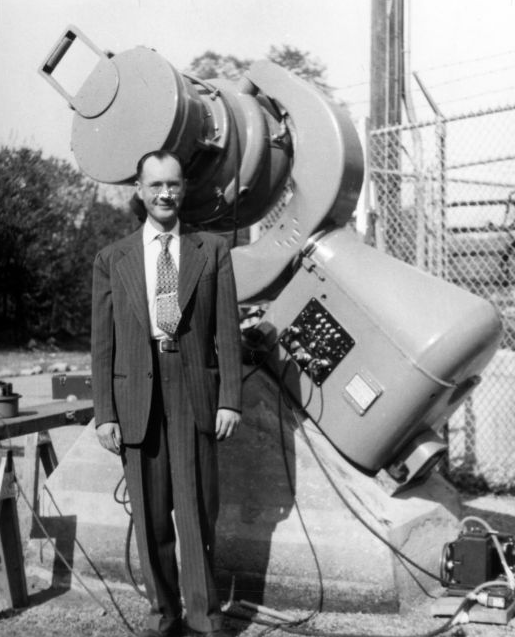 Second, these camera stations would send their information and photographs to the SAO in Cambridge where experts would crunch the numbers and predict the satellites’ orbits. But all of this depended, however, on having a rough idea of where to look in the first place. The third element of Whipple's plan was Operation Moonwatch, a global network of amateur satellite spotters. Whipple's satellite tracking network was far-flung and complex with many moving parts. Yet, during the first years of the Space Age, it functioned very well as tens of thousands of observations from professionals and amateurs alike poured into Cambridge to be processed into orbital calculations. It also helped make Whipple and his colleagues Space Age celebrities.
Second, these camera stations would send their information and photographs to the SAO in Cambridge where experts would crunch the numbers and predict the satellites’ orbits. But all of this depended, however, on having a rough idea of where to look in the first place. The third element of Whipple's plan was Operation Moonwatch, a global network of amateur satellite spotters. Whipple's satellite tracking network was far-flung and complex with many moving parts. Yet, during the first years of the Space Age, it functioned very well as tens of thousands of observations from professionals and amateurs alike poured into Cambridge to be processed into orbital calculations. It also helped make Whipple and his colleagues Space Age celebrities.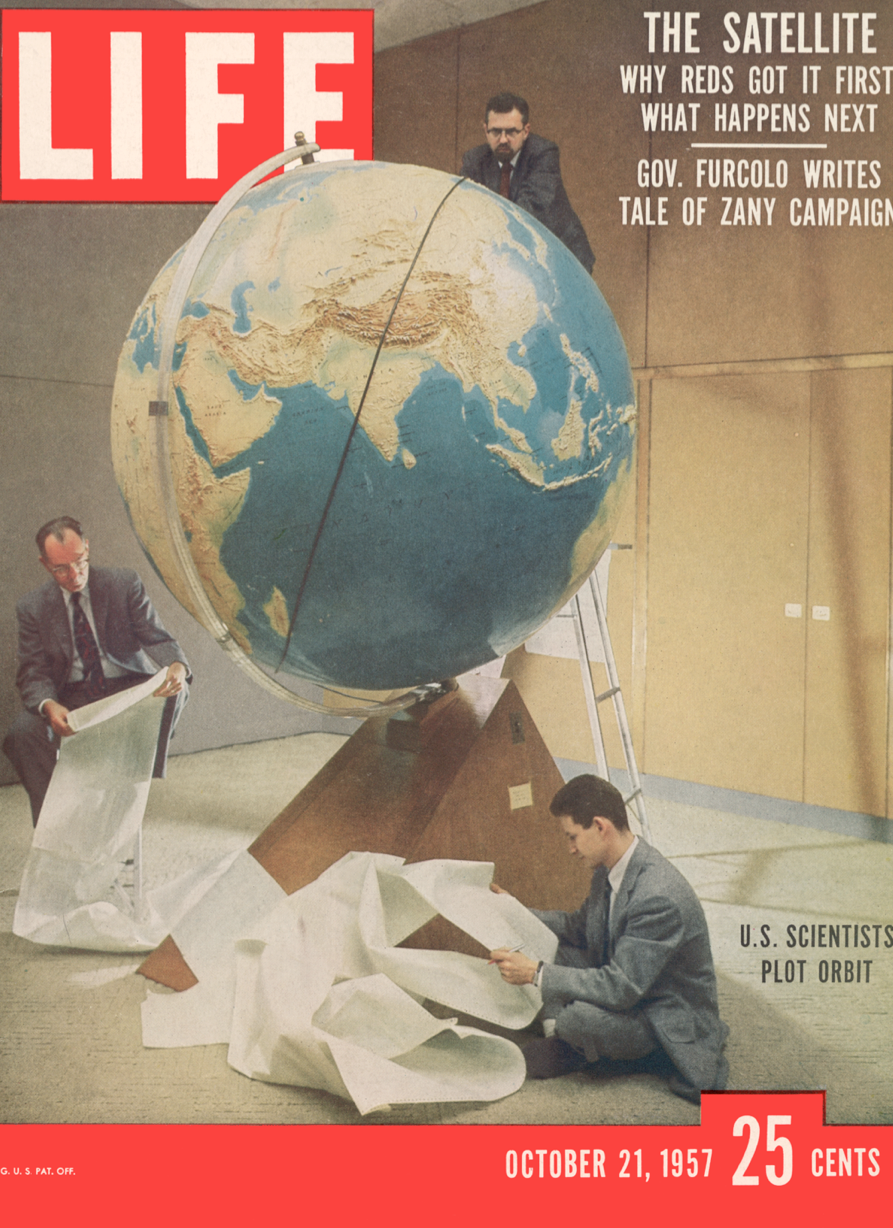 NASA and military contracts for satellite tracking, worth millions of dollars annually, became the SAO’s largest source of revenue in the early 1960s. They enabled Whipple to oversee a rapid expansion of the SAO into promising new areas of research such as space studies, planetary science, and astrophysics while strengthening its expertise in meteoritic and cometary studies. These endeavors were linked to Whipple’s own interests in the upper atmosphere and meteorites and greatly expanded his observatory’s research networks. The end result - by the 1960s, Whipple had transformed the SAO into the world's largest astronomical research center. ((Consider the institution's personnel -- when Whipple was hired, the SAO had three scientists on staff. By 1963, the SAO employed some 330 people and had grants and contracts worth several million dollars.))Despite the long list of honors he received including election to the National Academy of Sciences, recognition for his research from Presidents Truman and Kennedy, and dozens of awards from scientific societies around the world, Whipple hesitated to describe himself as a scientist. “I’m fundamentally,” he told an interviewer, “an engineer at heart.” Comets, meteors, planetary astronomy, variable stars, supernovae, radio astronomy, telescope design – Whipple worked in all these areas. Yet his view of himself as an engineer, someone with an intuitive understanding of how things work and what can be done with them, explains a great deal about Whipple’s career.ESA's accomplishment will be a fitting tribute to Whipple who possessed a lifelong fascination for scientific research while also imagining the possibilities that futuristic and ambitious endeavors like landing on a comet held. So - on November 11, when Rosetta sends Philae down to stick a landing on 67P, I'll be raising a toast to Dr. Comet.
NASA and military contracts for satellite tracking, worth millions of dollars annually, became the SAO’s largest source of revenue in the early 1960s. They enabled Whipple to oversee a rapid expansion of the SAO into promising new areas of research such as space studies, planetary science, and astrophysics while strengthening its expertise in meteoritic and cometary studies. These endeavors were linked to Whipple’s own interests in the upper atmosphere and meteorites and greatly expanded his observatory’s research networks. The end result - by the 1960s, Whipple had transformed the SAO into the world's largest astronomical research center. ((Consider the institution's personnel -- when Whipple was hired, the SAO had three scientists on staff. By 1963, the SAO employed some 330 people and had grants and contracts worth several million dollars.))Despite the long list of honors he received including election to the National Academy of Sciences, recognition for his research from Presidents Truman and Kennedy, and dozens of awards from scientific societies around the world, Whipple hesitated to describe himself as a scientist. “I’m fundamentally,” he told an interviewer, “an engineer at heart.” Comets, meteors, planetary astronomy, variable stars, supernovae, radio astronomy, telescope design – Whipple worked in all these areas. Yet his view of himself as an engineer, someone with an intuitive understanding of how things work and what can be done with them, explains a great deal about Whipple’s career.ESA's accomplishment will be a fitting tribute to Whipple who possessed a lifelong fascination for scientific research while also imagining the possibilities that futuristic and ambitious endeavors like landing on a comet held. So - on November 11, when Rosetta sends Philae down to stick a landing on 67P, I'll be raising a toast to Dr. Comet.